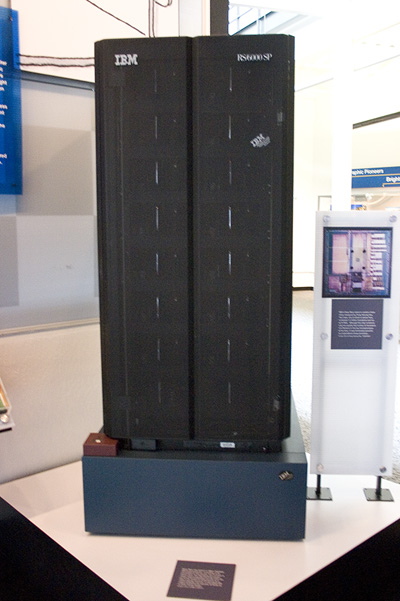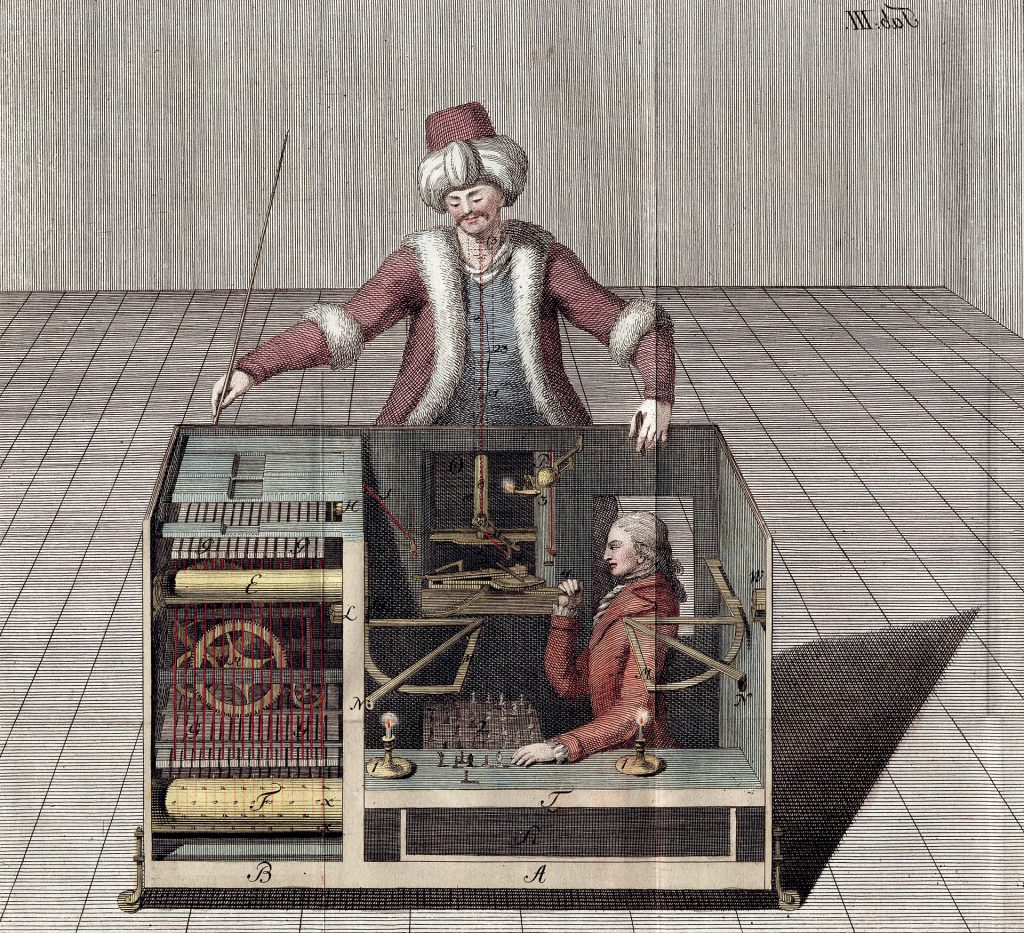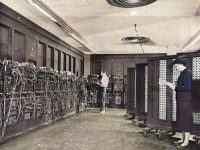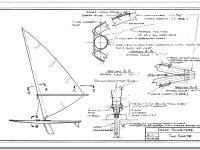
IBM’s Deep Blue
On May 11, 1997, Deep Blue, a chess-playing supercomputer, defeated chess grandmaster Garry Kasparov in the last game of the rematch, and became the first computer to beat a world-champion chess player in a classic match format.
From The Turk to Computer Chess Programs
The story of the chess playing supercomputer started in 1985 with a computer called ChipTest at Carnegie Mellon University by Feng-hsiung Hsu. But actually, the dream of an automated chess player being able to beat a human chess grandmaster is much older. In the late 18th century, The Turk, a fake chess-playing machine constructed in 1770 by Austrian engineer Wolfgang von Kempelen, was the main attraction at the royal court of Empress Maria Theresa of Austria. Well, it should take almost 200 years until the development of the very first chess computer program. In 1950, information scientist Claude Shannon published “Programming a Computer for Playing Chess“, one of the first papers on the problem of computer chess.[4] And in 1951, computer pioneer Alan Turing was able to develop on paper the first program capable of playing a full game of chess.[5] An implementation had to wait until 1957, when Alex Bernstein independently some Russian programmers developed the first programs that could play a full game of chess.

The chess playing automaton of Wolfgang von Kempelen, also known as The Turk, (joseph Racknitz, 1789)
First there was Deep Thought
But, back to the history of Deep Blue and its predecessors. ChipTest was based on a special VLSI-technology move generator chip developed by Hsu, being controlled by a Sun-3/160 workstation and capable of searching approximately 50,000 moves per second. It’s successor, Deep Thought, named after a fictional computer in Douglas Adams‘ The Hitchhiker’s Guide to the Galaxy.[6] Its algorithms were quite simple evaluation functions, but it could examine up to 500 million chess positions per move in tournament games, which is sufficient to reach depth of 10 or 11 moves ahead in complex positions. But, this was not sufficient to beat a human grandmaster. In 1898, Deep Thought was easily defeated in both games of a two-game match with Garry Kasparov.
Wchess and Deep Blue
Now, IBM held a contest to rename the chess machine and it became “Deep Blue”, a play on IBM’s nickname, “Big Blue” to continue the quest to build a chess machine that could defeat the world champion. In 1995, the Deep Blue prototype played in the 8th World Computer Chess Championship, where it played the computer program Wchess to a draw, while Wchess was running only on a personal computer. In round 5 Deep Blue prototype had the white pieces and lost to the computer program Fritz 3 in 39 moves while Fritz was running on an Intel Pentium 90Mhz personal computer. Should this already be sufficient to beat a human chess grandmaster?
Brute Force Computing Power
Deep Blue derived its playing strength mainly out of brute force computing power. It was a massively parallel, RS/6000 SP Thin P2SC-based system with 30 nodes, with each node containing a 120 MHz P2SC microprocessor for a total of 30, enhanced with 480 special purpose VLSI chess chips. Its chess playing program was written in the programming language C and ran under the AIX operating system. It was capable of evaluating 200 million positions per second. On February 10, 1996, Deep Blue became the first machine to win a chess game against Garr Kasparov in Philadelphia, the reigning world champion under regular time controls. However, Kasparov won three and drew two of the following five games, beating Deep Blue by a score of 4–2 (wins count 1 point, draws count ½ point). The match concluded on February 17, 1996. Then, Deep Blue was then heavily upgraded and played Kasparov in a rematch, which has been called “the most spectacular chess event in history”, again in May 1997, winning the six-game rematch 3½–2½, ending on May 11. Deep Blue was able to win the deciding game six after Kasparov made a mistake in the opening, becoming the first computer system to defeat a reigning world champion in a match under standard chess tournament time controls.
How do modern chess engines work?, [8]
References and Further Reading:
- [1] “The official site of the matches“. Deep Blue. IBM Research.
- [2] Deep Blue player profile and games at Chessgames.com
- [3] Deep Blue system described by Feng-hsiung Hsu, Murray Campbell and A. Joseph Hoane Jr.
- [4] Claude Shannon – the Father of Information Theory, SciHi Blog
- [5] Churchill’s Best Horse in the Barn – Alan Turing, Codebreaker and AI Pioneer, SciHi Blog
- [6] Don’t Panic! – remembering Douglas Adams, SciHi Blog
- [7] Deep Blue at Wikidata
- [8] How do modern chess engines work?, TNG Technology Consulting GmbH @ youtube
- [9] Timeline of computer chess, via DBpedia and Wikidata






Fritz 3 was a beast for its time.. kicking multiple grandmaster’s to the curb at blitz.. I would have loved to see it play more games against Deep Blue prototype (i.e., Deep Thought II).
Also, if I recall, the Deep Blue team had an excuse for why Deep Blue lost to Fritz 3.. they said it was because their machine had crashed and they had to reset it, which meant that it didnt have time to calculate one of its moves properly lol whatever
btw, bottom of the third paragraph, change “1898” to “1988”.